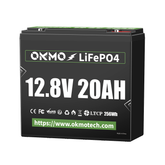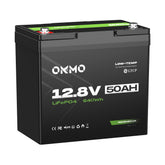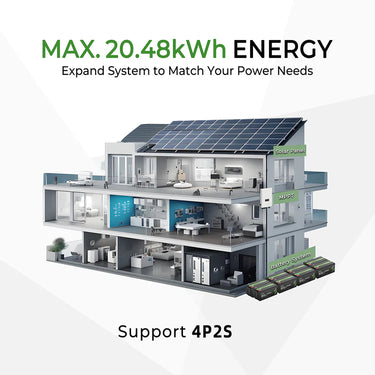What is a LiFePO4 Battery?

I. The Essence of LiFePO4 Batteries
LiFePO4 (lithium iron phosphate) batteries are a type of lithium-ion battery that uses lithium iron phosphate (LiFePO₄) as the cathode material. The name derives from its core chemical elements: lithium (Li), iron (Fe), phosphorus (P), and oxygen (O). Compared to traditional lithium-ion batteries (e.g., lithium cobalt oxide LiCoO₂ or ternary lithium NCM/NCA), LiFePO4 batteries achieve more stable chemical properties through their unique olivine crystal structure. This structure undergoes minimal volume changes during charging and discharging, fundamentally addressing issues like short lifespan and thermal runaway caused by structural collapse in conventional lithium batteries.
II. LiFePO4 vs. Lithium-Ion Batteries: Five Core Advantages
| Comparison Criteria | LiFePO4 Batteries | Traditional Lithium-Ion Batteries |
|---|---|---|
| Safety | High-temperature resistant (stable above 200°C), no explosion risk | High thermal runaway risk (unstable at 60-80°C) |
| Cycle Life | 2,000-5,000 cycles (over 10 years) | 500-1,000 cycles (3-5 years) |
| Thermal Stability | <5% capacity loss at high temperatures | Up to 30% capacity decay at high temperatures |
| Eco-Friendliness | Cobalt-free, no heavy metals, >95% recyclable | Contains cobalt/nickel, high recycling costs |
| Cost Efficiency | 50% lower long-term costs | Low upfront cost but frequent replacements |
Case Study: Tesla’s Megapack energy storage systems have fully adopted LiFePO4 batteries due to their ability to withstand daily deep cycling in grid-scale storage with near-zero fire risk.
III. Limitations and Technological Advancements of LiFePO4
Despite its advantages, LiFePO4 batteries have a lower energy density (150-160 Wh/kg) compared to ternary lithium batteries (200-250 Wh/kg), limiting their use in high-end EVs. However, innovations like nano-engineered cathodes (e.g., BYD’s Blade Battery technology) and silicon-carbon anodes have boosted their energy density to over 180 Wh/kg, while low-temperature performance (-20°C capacity retention >80%) far surpasses traditional lithium batteries.
IV. Future Battery Technology Trends
-
Commercialization of Solid-State Batteries (pre-2030): Solid-state batteries based on LiFePO4 will exceed 400 Wh/kg energy density and eliminate flammable electrolyte risks.
-
Rise of Sodium-Ion Batteries: As a complement to LiFePO4, sodium-ion batteries (e.g., CATL’s first-gen products) will dominate low-cost energy storage markets but rely on LiFePO4 optimization for higher energy density (120-160 Wh/kg).
-
Material Innovation: Lithium manganese iron phosphate (LMFP) cathodes will increase LiFePO4’s voltage from 3.2V to 4.1V, boosting energy density by 20%.
-
Smart Management: AI-driven battery health systems (e.g., Huawei’s Smart BMS) will extend LiFePO4 cycle life to over 8,000 cycles.

V. Conclusion: Why LiFePO4 is the "Foundation of the Future"
In an era prioritizing safety-first energy solutions (e.g., home storage, electric ships, base station power), LiFePO4 batteries have become indispensable due to their "zero-accident" track record and ultra-long lifespan. While high-end electronics and long-range EVs still rely on high-energy-density batteries, LiFePO4’s rapid innovation (5-8% annual energy density growth) is closing the gap. Driven by global carbon neutrality goals, LiFePO4 is projected to claim over 60% of the lithium battery market by 2030, solidifying its role as the "heart" of the green energy revolution.
Data Support: According to BloombergNEF, global LiFePO4 battery capacity reached 800 GWh in 2024, with costs falling to $80/kWh (just 65% of ternary lithium costs), while China controls 90% of the supply chain. This technology is not only key to energy transition but also a strategic battleground in global industrial competition.










